In the world of science, creativity is often overlooked, undervalued and left to the realm of artists. But what if I told you that creativity is actually a vital skill for scientists?
Even though I left the scientific lab a few years ago, I am still using my creative thinking muscle just as I did back then. The scientific methods is not just about following protocols and conducting experiments. It’s also about thinking outside the beaker and coming up with innovative solutions.
Indeed, creativity is defined as the process of combining existing concepts or knowledge into novel and useful concepts. To me, this sounds as if the scientific world is full of creativity. Only creative scientists can come up with new and interesting ideas about research topics, collaborations, communication projects or application fields for their basic research.
Here, we look at how scientists are and should be creative to successfully bridge seemingly unrelated domains and spread their knowledge. This article explores how creativity is the foundation of scientific advancement and innovative solutions. Lastly, I will give you some tips on how you, as a lab-based scientist and researcher, can boost your creativity to solve complex challenges and generate fresh insights.
Why creativity is important for scientists
Creativity, as an intuitive process, usually comes to us unconsciously, For many, creative work goes along with being in the “flow”; a meditative state in which we are so involved in an activity that time and location do not exist.
As such, creative moments can result in novel ideas, discoveries or breakthroughs often triggering positive emotions like awe or wonder. This is why I am convinced that science heavily relies on creativity and the ability to think creatively. Only through combining current knowledge and creating new conceptual ideas, scientists can find solutions to problems or come up with ground-breaking innovations. Let’s look at some areas where scientists need to harness their creative minds.
Creativity in scientific inquiry
As PhD students, we were taught a problem-solving approach. We were given a scientific question or hypothesis and were asked to find ways to answer or prove it. This required us to go through and analyse the scientific literature to come up with experiments. Our imagination and curiosity – both hinging on creative thinking – would help us in this scientific inquiry.
The results from our experiments, we would interpret and analyse with the goal of finding patterns or solutions. These data would then become the foundation for new questions that required another round of experiments until the big question was answered (or the time of our PhD ran out).
Each one of these rounds consisted of a creative period in which we would combine the known data to form a new research question. Even though these creative-experimental circles might have led to negative results, this experience taught us that it is safe to explore unknown questions, think freely and follow a logical line of thought. Hence, fostering such a creative and flexible mindset empowers scientists to explore the unknown, sometimes leading to remarkable advancements.
Enhancing scientific communication through creativity
As a researcher, you are basically also a communicator relying on scientific relationships and collaborations. For this, you also need to convey complex ideas or your research findings to all types of audiences. And guess what, creativity is a major driver to finding relatable and engaging ways to communicate science, as I know from my own experience.
Whether you are writing a blog or social media post about your latest paper, create a graphical abstract or infographic or give the weekly institutional seminar. All of these communication projects demand you to combine your current knowledge on the topic and create a new output specific to your target audience in an accessible format. Hence, creativity helps bridge the gap to both non-experts and researchers outside of your field making science accessible to anyone. With these projects, you can further raise awareness, improve scientific literacy or even inspire future generations to pursue scientific careers.
Creativity in collaboration
Additionally, creativity is an essential asset in scientific collaboration, which also relies on effective communication. Interdisciplinary collaborations are based on your creative approaches to link different scientific disciplines and expertise to foster innovation.
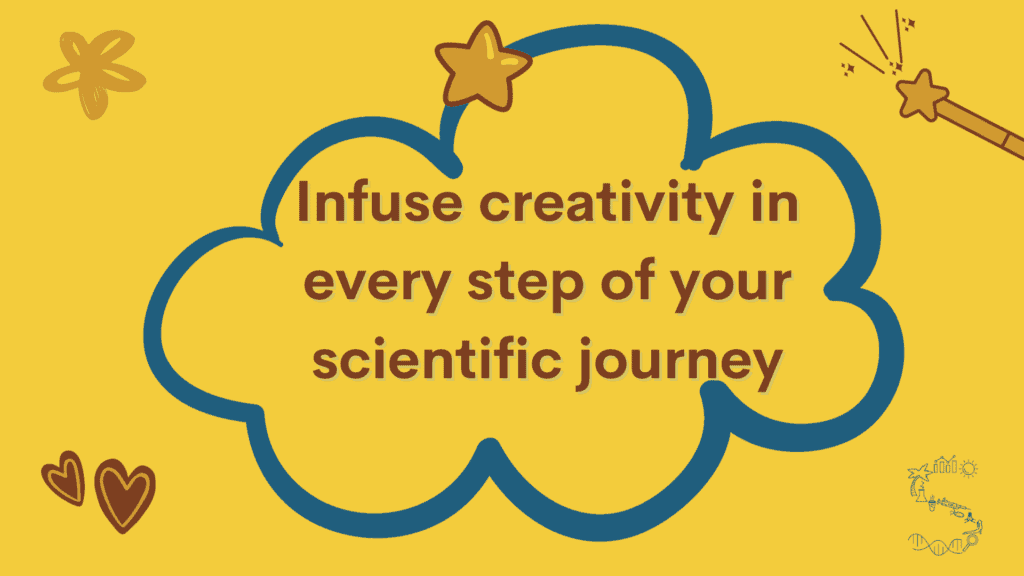
How to boost creativity in the lab
As we’ve seen, creativity is a vital skill that empowers scientists to find solutions and become better communicators and collaborators. Since creativity works like a muscle, you need to train it consistently, implementing a few small steps every day. Eventually, this will integrate creativity into your unconscious thinking processes. Here are some tips to improve your creativity:
Embrace curiosity
Curiosity is the foundation of scientific inquiry and it also fuels creativity. Stay curious about your research field, actively seek out new information and uncertainties and ask thought-provoking questions. Engage in discussions with your colleagues, attend seminars and explore interdisciplinary collaborations. By widening your knowledge and perspectives, you can stimulate your creativity and see your research from different angles.
Create a stimulating environment
Your work environment, including your lab and office space, plays a crucial role in influencing your creativity. Hence, I highly recommend maintaining an organized and clutter-free workspace to minimize distractions and promote focus. Develop the habit of quickly jotting down all your thoughts and ideas to free up your mental space and go back to your notes when you have the capacity and time.
Regular breaks away from your workspace help you disconnect and give you mental freedom. Additionally, consider introducing elements of nature, such as plants, to enhance aesthetics and create a calming atmosphere to stimulate creative thinking.
Encourage brainstorming sessions
Collaboration and brainstorming sessions can be powerful tools for boosting creativity in the lab. Become part of a group of colleagues or peers that encourages open discussions about their research projects. Be a sounding board for your peers, bouncing scientific ideas and possible solutions back and forth. Try to create a space where everyone feels comfortable sharing their ideas without judgment to break down mental barriers that hinder creativity.
Integrate the growth mindset concept
Creativity is an essential part of the so-called growth mindset concept; an attitude that states that you have all the tools to learn any ability or activity that you want to. All you need is grit; that bit of motivation or passion that drives you to actually learn that activity.
By embracing a mindset of continuous learning, you will grow both as a person and a scientist. With your new knowledge, creative thinking processes will come to you automatically providing you with new ideas and fresh solutions.
Experiment with new techniques
A growth mindset also makes it easier for you to step out of your comfort zone and try new experimental techniques. Explore different methodologies, instruments or software tools relevant to your research area. By venturing into uncharted territories, you may stumble upon novel approaches that inspire creative solutions for your latest research problem.
See failure as a learning opportunity
Failure is an inherent part of scientific research. Yes, I know it can be incredibly frustrating and may make you doubt your existence as a scientist. But instead of allowing setbacks to discourage you, activate your growth mindset and view negative results as valuable learning opportunities.
After a failure, it is absolutely okay to take some time to be upset and reset. But afterward, your positive mindset will enable you to analyse the results objectively to gain insights, rethink your methods and identify alternative paths forward. Hence, a flexible and resilient attitude strengthens creativity as it encourages out-of-the-box thinking and experimentation.
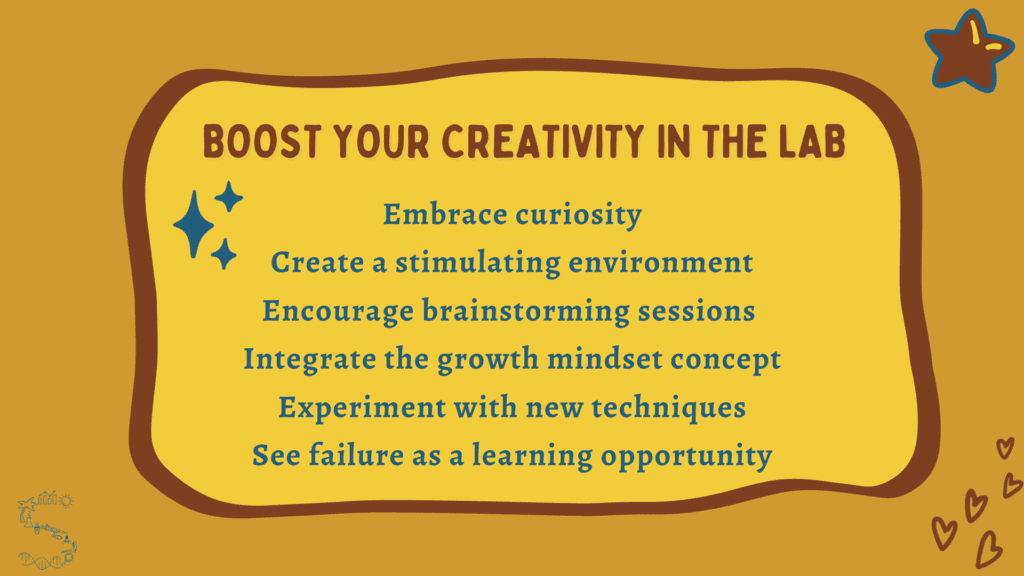
Embrace creativity in science
Even though many think otherwise, creativity and science are intertwined in a complex relationship. Applying creative thinking to scientific research stimulates innovation, fosters interdisciplinary collaborations and paves the way for ground-breaking discoveries.
As scientists, researchers, professors, PhD students, postdocs and lab technicians, embracing creativity empowers us to explore uncharted territories, challenge existing paradigms and transform our respective fields of study. So, let’s keep that positive mindset and foster creativity in the lab to unleash our scientific potential!
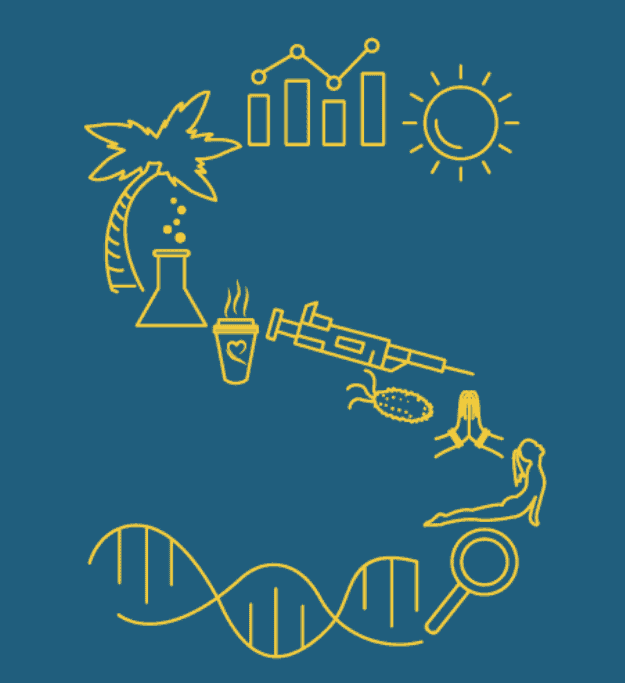
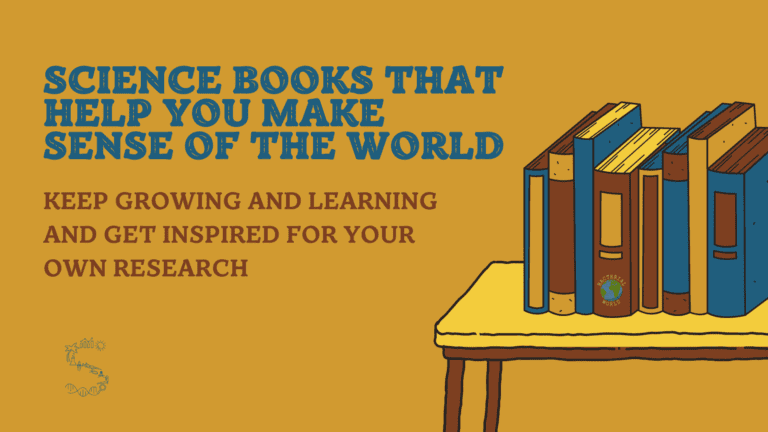
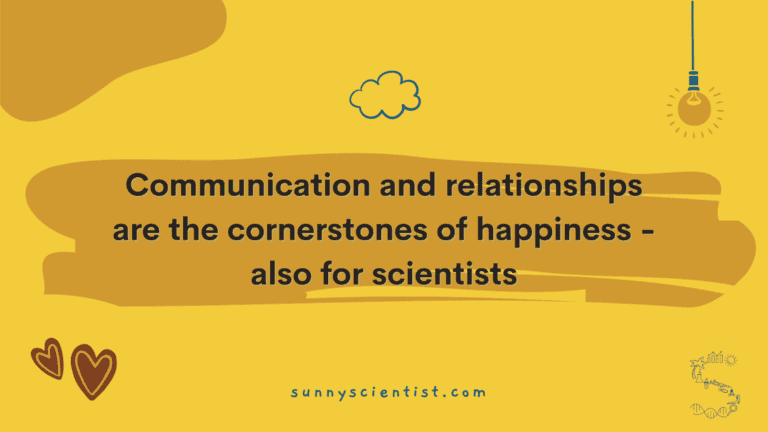
One Response